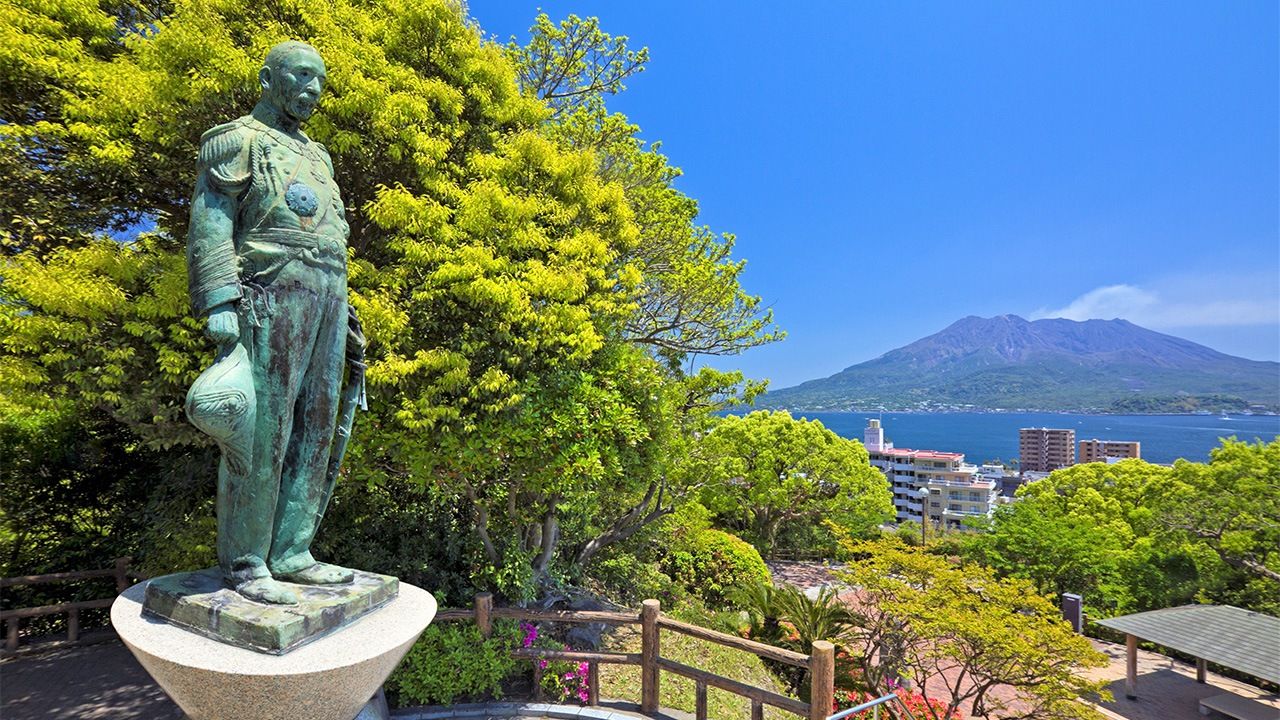
The Russo-Japanese War: The First “Total War” of the Twentieth Century
History World Politics Society- English
- 日本語
- 简体字
- 繁體字
- Français
- Español
- العربية
- Русский
Fear of Invasion
For much of Japan’s Meiji era (1868–1912), there was a fear of Russian invasion. In the eighteenth century, Russia had begun southward expansion to secure warm-water ports, and in the last years of the shogunate, it forced Japan to open up to trade—the Treaty of Shimoda between the two countries was signed in 1855, after Japan entered similar treaties with the United States and Britain.
In 1861, a Russian warship temporarily took control of the island of Tsushima, before it was driven away by the British. Then, despite the terms of the Treaty of Shimoda, stating that both Japanese and Russians could live on the island known in Japan as Karafuto (now administered by Russia as Sakhalin), Russia established a penal colony and stationed soldiers there in the early Meiji era, putting pressure on Japanese residents.
In May 1891, Crown Prince Nicholas of Russia (the future Nicholas II) was attacked with a sword by one of the Japanese policemen escorting him in Ōtsu, Shiga Prefecture, while returning to Kyoto from an excursion to Lake Biwa. Emperor Meiji and Prime Minister Matsukata Masayoshi rushed to Kyoto to visit the injured crown prince in hospital. Many Japanese citizens also sent telegrams and letters of apology, as well as mountains of gifts.
One woman even slit her throat in front of the Kyoto Prefectural Office as an expression of her remorse to the crown prince and her feelings over the emperor’s anguish. While this was a considerable overreaction, it represents Japanese fears that Russia would use the Ōtsu Incident as an excuse for a declaration of war. There was concern that Japan was unprepared for such a conflict, and it would certainly become a colony. Fortunately, the Russian government and Crown Prince Nicholas said that they were satisfied with the Japanese response, but Foreign Minister Aoki Shūzō and others resigned to take responsibility for the incident.
A Powerful Ally
Three years later, in 1894, the Sino-Japanese War began, prompted in part by moves to counter Russia. From 1868 onward, Japan had designs on Korea, hoping to modernize it and simultaneously protect against southern expansion by Russia. But Korea was a vassal of Qing China, which resented Japanese interference. Tensions grew and war broke out.
After Japan’s crushing victory in 1895, China was forced to recognize Korean independence in the Treaty of Shimonoseki, pay heavy reparations of 200 million taels (equivalent to around ¥310 million at the time, or more than twice the national income), and hand over territory including the Liaodong Peninsula and the archipelago now known as Taiwan.
While Japan was still intoxicated by victory, Russia poured water on the country’s celebrations. It persuaded France and Germany to join it in demanding that Japan return the Liaodong Peninsula. This became known as the Triple Intervention.
With no hope of victory if it opposed the demand, Japan returned the territory to China. However, Russia then established control of the ports of Lushun (Port Arthur) and Dalian on the peninsula via a lease, and began asserting its authority throughout the area. It dispatched more troops at the time of the Boxer Rebellion at the turn of the century and took over all of Manchuria.
Meanwhile, the Korean government chafed under Japanese influence and drew closer to Russia. Queen Min, a central figure in the government, was assassinated in a plot by Miura Gorō, Japan’s minister in Korea. Her husband King Gojong fled to seek refuge in the Russian Embassy and Korea established a new government with Russian financial and military support.
Japan responded by approaching Britain to form the Anglo-Japanese Alliance in 1902. Britain saw Russia as a threat to its interests in China and India, and supported Japan to hinder Russian advances in East Asia.
With a new powerful ally, the Japanese government wanted Russia to recognize its authority in Korea in exchange for its acknowledgement of Russia’s control in Manchuria. At this point, it wanted to solve bilateral issues via diplomacy.
The Japanese people, however, emboldened by the alliance with the British Empire, wanted to go to war. When Russia began to build a base in northern Korea, public opinion moved overwhelmingly to support military action.
In part, this was the result of the Japanese government not publicizing the relative strengths of Japan and Russia, but the media must also take responsibility. As most newspapers and magazines adopted a belligerent tone to boost sales, they did not report international predictions of Russian victory, instead fanning the flames of war.
Although few in number, there were some notable pacifists and others who opposed the war, including Uchimura Kanzō, who argued from a humanitarian Christian viewpoint, and Kōtoku Shūsui and Sakai Toshihiko from a socialist perspective. When the daily Yorozu Chōhō came out in favor of the war, Kōtoku quit his job there and founded the company Heiminsha, which published the antiwar paper Heimin Shimbun after the conflict began. Yosano Akiko also wrote the famous antiwar poem “Kimi shinitamō koto nakare” (Thou Shalt Not Die) for her brother, who fought in the war.
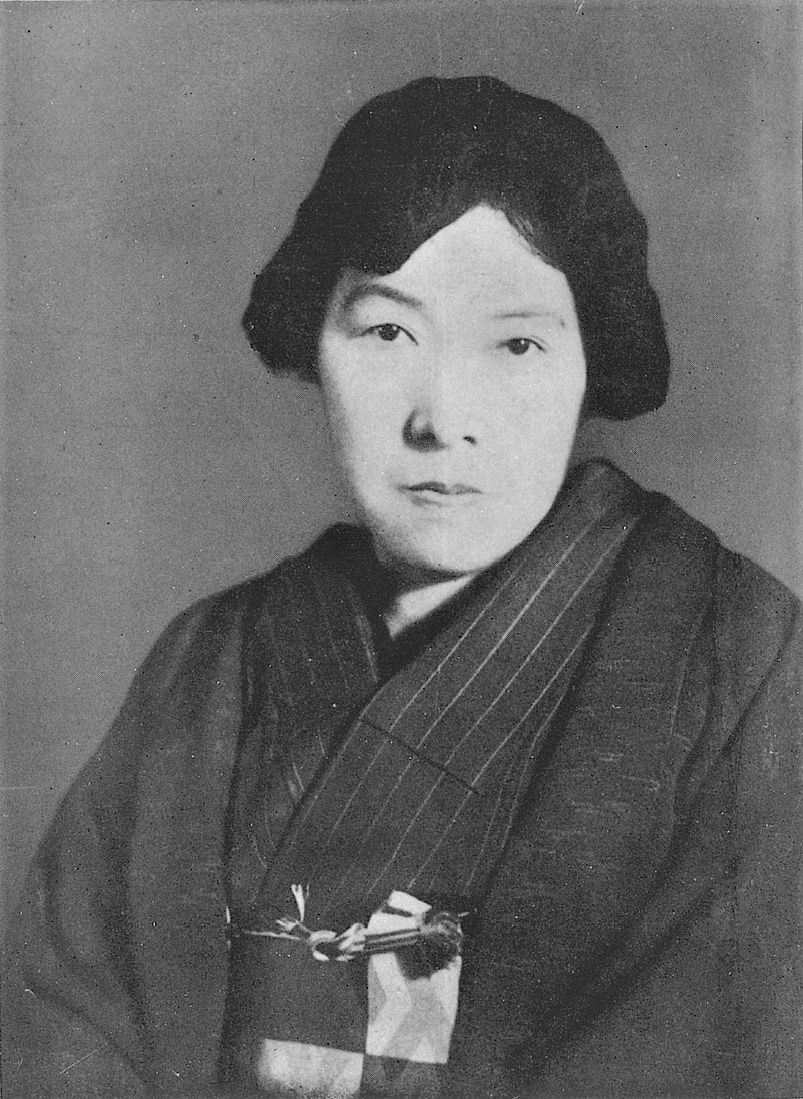
Yosano Akiko, known as a major poet of Japanese romanticism. She was also a regular commentator on women’s issues and education. Picture from Kindai Nihonjin no shōzō (Portraits of Modern Japanese). (Courtesy National Diet Library)
Vain Hopes of a Short War
With public opinion behind it, Japan’s military had already made the decision to fight in the autumn of 1903. Negotiations broke down in February 1904, and Japan declared war on Russia.
Emperor Meiji is said to have opposed the war until just before it started, saying that if Japan was defeated, he did not know how he could apologize to his ancestors or what he could do for the people. The emperor, government, and military leaders all knew that Japan could not overcome Russia in a head-to-head conflict.
With this in mind, the military planned a strategy to ensure the war would last around a year. First, Japan’s Combined Fleet would ambush and destroy Russia’s Pacific Fleet. At the same time, the Japanese Army would hit Liaoyang in Manchuria with full power before Russia could concentrate its forces in the Far East. This would quickly drain the Russian government’s enthusiasm to fight and bring the conflict to a swift conclusion. In other words, Japan opened hostilities with a powerful adversary like Russia without a clear idea of the prospects or cost of victory.
But hopes of a short war were a delusion. Although Japan won the Battle of Liaoyang, it suffered more than 5,300 fatalities before the Russians retreated. It also failed to wipe out the Pacific Fleet, which took refuge in Lushun.
The port at Lushun was defended by many heavy guns, and was impossible to approach by sea. The Japanese navy called on the army to make an attack. It took several months and considerable sacrifices of soldiers to break through concrete fortifications and capture the settlement. The Siege of Lushun consisted mainly of trench warfare with the use of 28-centimeter howitzers, machine guns, rapid-firing howitzers, hand grenades, and field guns. In this sense, it set a template for fighting in World War I, which would follow a decade later.
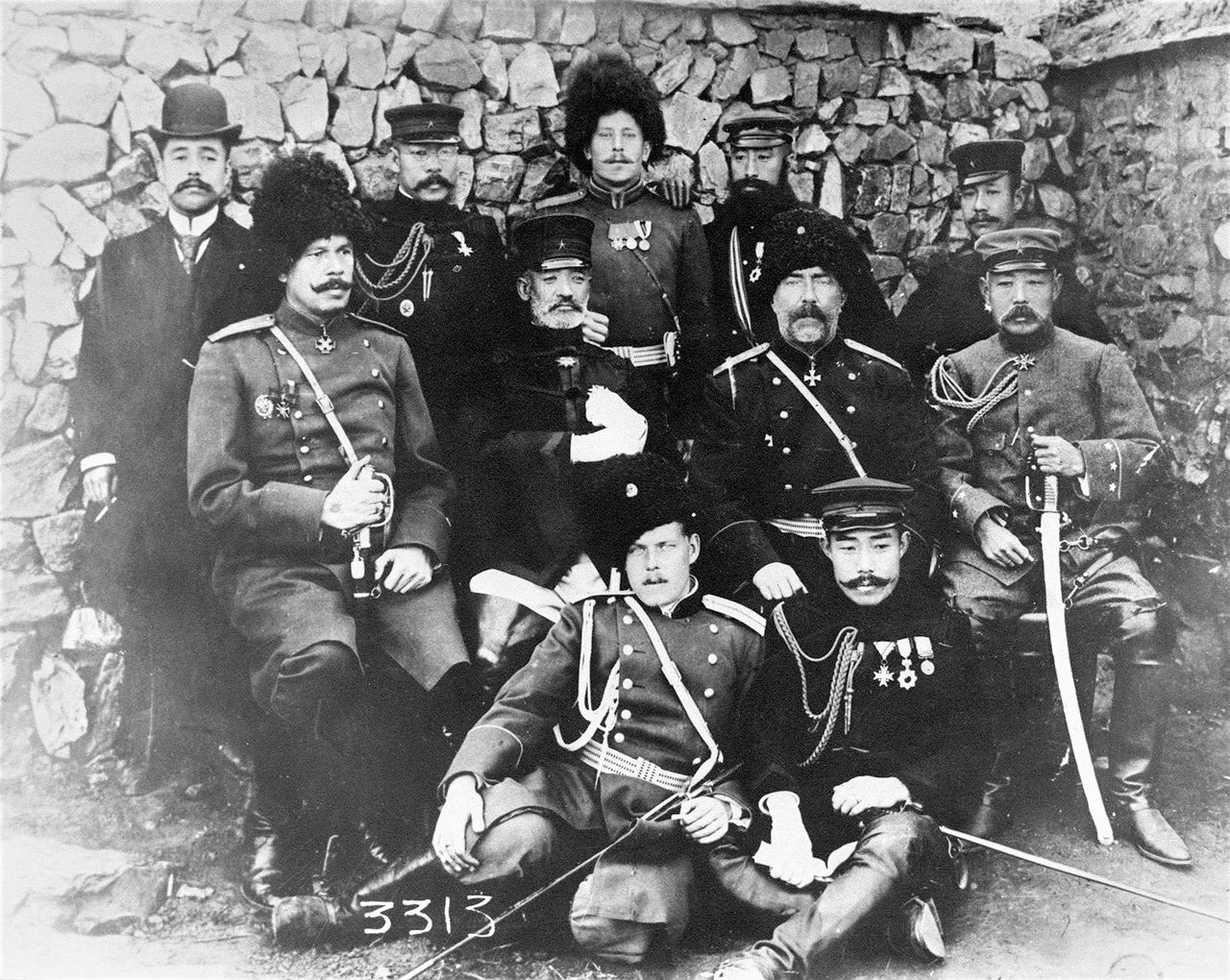
Photograph of Japanese and Russian officials after the meeting of Japanese General Nogi Maresuke (center row, second from left) and Russian General Anatoly Stessel (center row, second from right) on January 5, 1905, following the fall of Lushun. (© Jiji)
The Japanese army managed to achieve successive victories as it moved north before the decisive Battle of Mukden. This lasted for 10 days, involving as many as 600,000 combatants. Although Japan won the battle, it suffered 70,000 fatalities and lacked the military strength and armaments to pursue the retreating Russian soldiers.
Anger at Peace Treaty
The cost of the Russo-Japanese War spiraled to ¥1.7 billion. Around ¥1.35 billion was public debt, of which some two thirds was foreign debt. Japan raised the money to fight through loans solicited by Bank of Japan Vice-President Takahashi Korekiyo during a trip to Britain. Financing from Britain, the United States, and other countries was essential to Japan’s war effort.
Besides financing, Britain provided other significant backing that helped Japan to punch above its weight in the war. This included offering valuable intelligence, as well as hindering the progress of the Baltic Fleet on its long journey to the Pacific by refusing ships passage through the Suez Canal and not allowing them to refuel in British colonies. This was certainly a factor in Japan’s victory against the fleet in the Battle of Tsushima.
The Japanese people also cooperated fully with the war effort. More than 1 million soldiers were deployed, and there were repeated tax rises, as well as drives to collect public donations to the state.
On the other hand, Tsar Nicholas II’s will to fight remained firm, even after the Battle of Mukden. However, with the total destruction of the Baltic Fleet at the Battle of Tsushima in May 1905, he was finally ready to talk peace. In Saint Petersburg, imperial soldiers had attacked unarmed demonstrators in the Bloody Sunday incident in January, sparking major strikes and uprisings across the country in the Russian Revolution of 1905. This encouraged the Russian government to join peace negotiations.
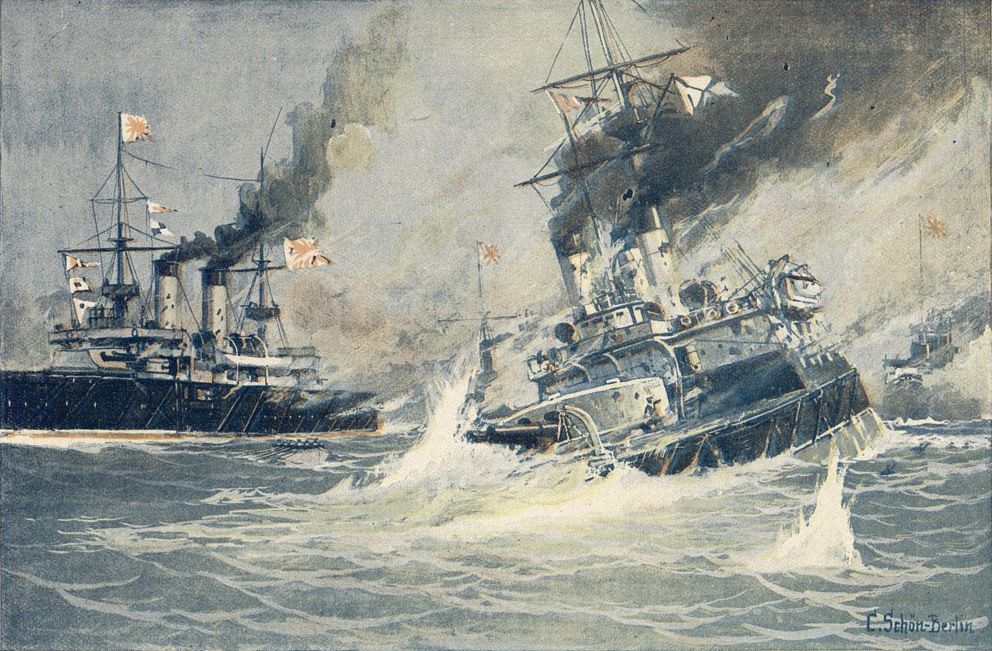
Commanded by Admiral Tōgō Heihachirō, the Japanese Combined Fleet, consisting of 96 vessels including 4 battleships and 8 cruisers, waited in the Tsushima Strait for Russia’s Baltic Fleet, made up of 38 vessels including 8 battleships and 6 cruisers. The two sides fought a fierce two-day battle beginning on May 27, 1905. The Japanese fleet succeeded in sinking 19 ships and capturing 7 more. The picture shows Japanese torpedo boats sinking the Russian battleship Navarin. (Courtesy Mary Evans Picture Library; © Kyōdō)
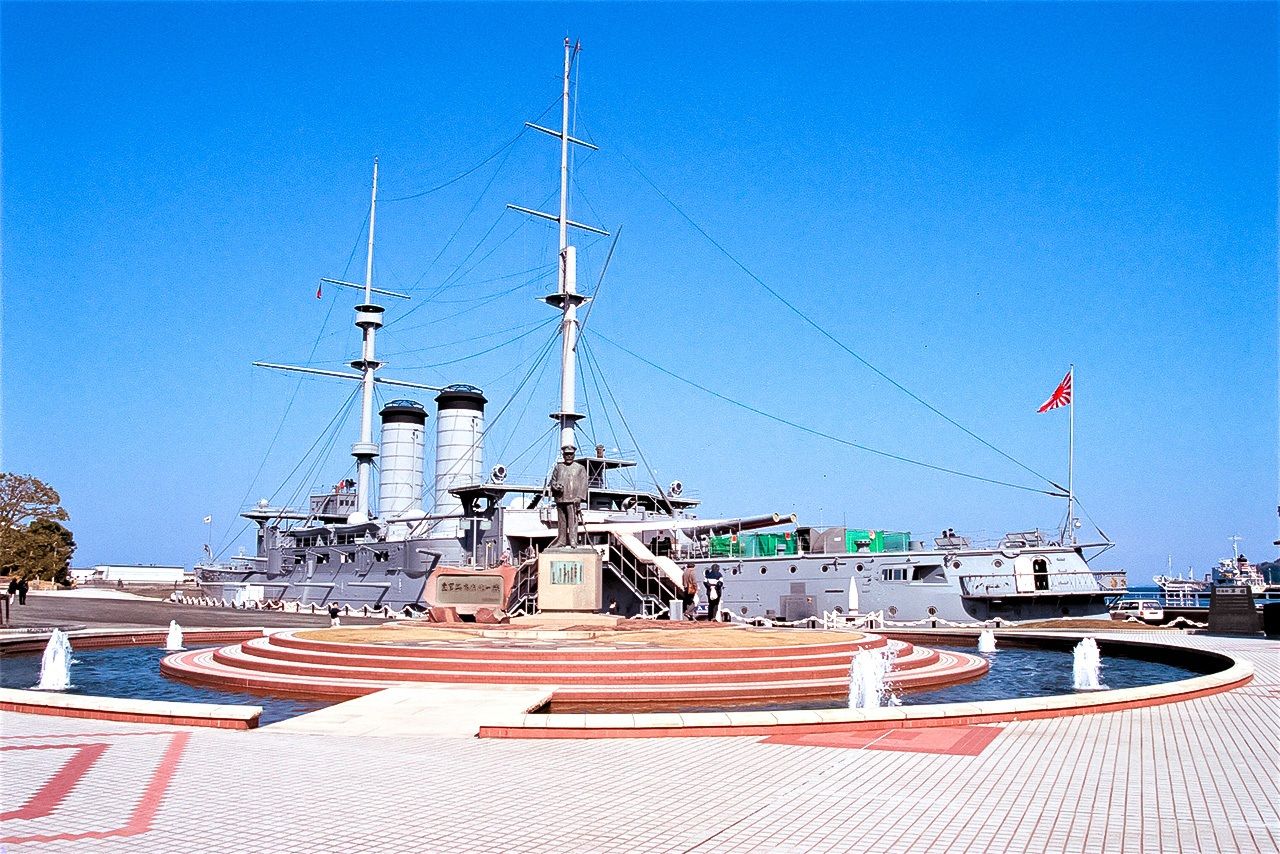
The Mikasa battleship was Japan’s flagship during the Battle of Mikasa. It was restored after being decommissioned and is now preserved on display in Mikasa Park in Yokosuka, Kanagawa Prefecture. (© Jiji)
In September 1905, US President Theodore Roosevelt mediated the Treaty of Portsmouth, which brought the war to an end. While Russia recognized Japan’s Korea claims and ceded its leases of Lushun and Dalian and the southern half of Sakhalin (Karafuto), it did not pay a single yen in reparations. In a way this was a natural result of the fact that, unlike Russia, Japan no longer had the money, weapons, or soldiers to keep fighting.
However, Japan’s people did not accept it. Under the slogan of gashin shōtan, suffering hardship for future revenge, they had endured 10 years of tax increases to finance military improvements, and made great sacrifices during the war. On the day of the signing of the peace treaty on September 5, a rally opposing the move was held in Tokyo’s Hibiya Park. This escalated into a riot as furious citizens attacked the home minister’s residence, police boxes, and a progovernment newspaper. Disturbances spread nationwide, leading to the collapse of the administration of Prime Minister Katsura Tarō.
Inspiring Fear and Resistance
The Russo-Japanese War became the first “total war” of the twentieth century. The involvement of major imperial powers via their diplomatic policy has led some academics to dub it World War Zero. How did it affect Japan, Russia, and the rest of the world?
Japan sent more than 1 million soldiers to continental Asia to fight, of whom almost 90,000 died in battle or of disease, while more than 150,000 were wounded.
Apart from this direct human cost, the Japanese state took on massive debts, its farming villages were devastated financially, and many citizens lost heart. The poet Ishikawa Takuboku talked of “our age of stagnation,” and distrust of the state and the collapse of communal units such as the family and the village led to a spike in the number of people who turned to socialism and communism or individualism and liberalism.
After their tragic experiences on the battlefield, many demobilized soldiers returning to rural areas fell into dissolute lifestyles, disturbing public morals. An imperial edict in 1908 urged citizens to be frugal and hard-working, while also aiming to restrain social and labor movements. The government paid a heavy price to prevent Russia’s southern expansion.
Russia had a similar number of men killed and wounded. While it did not have to pay reparations, it did give up the southern half of Sakhalin, and Japan’s control of Korea blocked its route to the south. The country revamped its foreign policy, signing the Anglo-Russian Convention with Britain in 1907 and pushing into the Balkans in the name of Pan-Slavism. This led to a confrontation with Germany and Austria-Hungary, triggering World War I.
The United States, which brokered the peace deal, had had an arrangement with Japan before the war to jointly manage the Manchurian railway. When the Japanese government unilaterally reneged on this deal, anti-Japanese sentiment soared in the United States. Movements to halt Japanese immigration emerged, and any efforts by Japan to step up its presence on the Asian continent were met with American condemnation.
While Japan’s victory spread fear of the Yellow Peril in the West, in nonwhite countries and areas, it inspired opposition and resistance against colonialism and the partition of the world by white people. Sun Yat-sen and Mao Zedong in China, Jawaharlal Nehru in India, and Ho Chi Minh in Vietnam were among those encouraged by the outcome of the war, which later motivated them in their revolutionary movements. It also spurred on the Persian Constitutional Revolution in Iran and resistance against British rule in Egypt.
(Originally published in Japanese on July 30, 2022. Banner photo: A statue of Admiral Tōgō Heihachirō in Tagayama Park in his hometown of Kagoshima, Kagoshima Prefecture. © Jiji.)